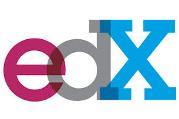Blended online and in-person courses are the future
What are the main benefits of this kind of learning?
Access is one of them, but much more than that, we aspire to improve the quality of education, both on campus and beyond. We don't want to just throw some videos and exams at students.
Take, for example, the experience of going to class, and missing something or losing the professor after the first five minutes. You would be scrambling to keep up. A lecture is one-size-fits-all, but with online learning, students can pause and rewind videos, multiple times until they can do an exercise. This leads them what's known as mastery-based learning, where you keep watching the video until you master the material.
Equally, there must be drawbacks – what are the challenges presented by MOOC learning?
If it's purely online learning, it doesn't give the student a campus experience, or what my colleague calls the 'magic of campus' – where there's a social aspect and you work together in groups and collaborate; where you're inspired by the professor. Online there are non-verbal cues, you're able to interrupt, and able to answer questions followed by questions. The conversation can also lead to unusual places. It's adaptive.
In-person, learning can be a lot more engaging. With an online discussion forum, I can do that, but it's not the same as being able to ask question right there. In-person has many aspects that are simply better than online, which is why I suggest that a blended model – bringing the best of online and in person – is the way campuses can transform themselves.
Have you been experimenting with blended models? What can you tell me about them?
We want to improve campus education, and a blended model is part of that. Having an instructor on the ground to help the students, plus having students that have paid tuition fees and are serious about the course, helps overall performance.
For example, in one of our blended experiments, we offered a circuits course course at San Jose State University in California. For the circuits course, we traditionally had a pass rate there of about 60%, but in the blended model, the pass rate went up to 91%. Which is very high when you compare it to the 7% average edX pass rate for a pure MOOC course. You can see a big difference.
Do you think online learning is a threat to teachers and bricks-and-mortar institutions?
I think online learning will augment teachers, by giving them a new tool. What tools have we given teachers since the textbook? I think the only example is in 1862 – a piece of chalk. I really view online courses as a new-age textbook, as a tool we can give teachers.
Instead of taking away jobs, I think it's going to make education much better for students and more exciting. And as a teacher, I don't have to give the same old lectures every year, telling the same old jokes; instead I can use online videos, and students can pause me and if they really want to, mute me. I can be more flexible, spending my time interacting with students.
If you look at the money being made in digital media, it's much more than three years ago. Education needs to transform. Those who don't and stick to the same old ways, without adapting to new technologies, will be in trouble.
Interview by Matthew Caines

